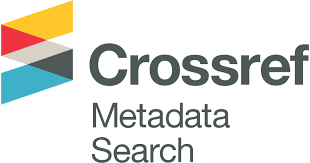تأثير العزل الجغرافي على سلالة نحل العسل (Apis mellifera) بمدينة الكفرة
DOI:
https://doi.org/10.58916/jhas.vi.421Keywords:
نحل العسل, منطقة الكفرة, الصفات المورفولوجية, عزل جغرافي، TpsDigAbstract
تعد سلالة نحل الكفرة جزءاً من التنوع الجيني لنحل العسل الليبي، حيث تتميز بخصائص مورفولوجية وسلوكية فريدة تجعلها مختلفة عن السلالات الأخرى في المنطقة. هدفت هذه الدراسة إلى قياس بعض الصفات المورفولوجية لشغالات نحل العسل، استخدم في هذه الدراسة عدد أربعة طوائف نحل لكل منطقة، نحل العسل بالكفرة (منطقة معزولة) ونحل العسل بطرابلس (منطقة غير معزولة)، من أجل تحديد تأثير العزل على سلالة نحل العسل بالكفرة. جمعت عشرين شغالة/طائفة من طوائف النحل خلال فصل الربيع 2020، ونقلت إلى معمل الحشرات بكلية العلوم - جامعة طرابلس، حيث تم تشريحها لقياس 20 صفة مورفولوجية، شملت 9 صفات للطول ( طول الخرطوم، الطول والعرض ودالة الجناح الأمامي (a\b)، وطول الفخذ والساق والرسغ القاعدي وعرض الرسغ القاعدي للأرجل الخلفية، وطول آلة اللسع لشغالات نحل العسل)، بالإضافة إلى 11 زاوية للجناح الأمامي. لم يسجل أي فروق معنوية في جميع متوسطات الصفات المورفولوجية التي تم دراستها بين طوائف النحل في المجموعتين، إضافةً إلى ذلك أظهرت نتائج التحليل التمييزي للصفات المورفولوجية وجود تداخل بين نحل منطقتي طرابلس والكفرة، مما يشير إلى تقاربهما أكثر من أي سلالة نحل أخرى، كما أكد التحليل العنقودي هذا الترابط في خطوط صلة القرابة بين نحل المنطقتين وتظهر واضحة بروابط المسافة الإقليدية. نستنتج من الدراسة إن العزل الطبيعي لا يكفي وحده للحفاظ على نقاء هذه السلالة، خاصة في ظل استيراد ملكات النحل.
Downloads
References
خلف الله، أسماء. 2017. تأثير العزل الجغرافي على الصفات المورفولوجية لنحل العسل (Apis mellifera) في الواحات الليبية. رسالة ماجستير، كلية العلوم، جامعة طرابلس.
Abou-Shaara, H. F. 2013. Wing venation characters of honeybees. Journal of Apiculture, 28(2), 79-86.
Abou-Shaara, H. F. and Al-Ghamdi, A. A. 2012. Studies on wings symmetry and honeybee races discrimination by using standard and geometric morphometrics. Biotechnology in Animal Husbandry, 28 (3), 575-584.
Abou-shaara, H.F., Al-aw, M.A. and Eıd, K.S. 2012. Stability of honey bee morphological characters within open populations. Uludağ Arıcılık Dergisi, 12(1), 31-37.
Abou-Shaara, H. F.; Draz, K. A.; Al-Aw, M. and Eid, K. 2011. Simple method in measuring honeybee morphological characters. In Proceedings of 42nd International Apicultural Congress–APIMONDIA in Buenos Aries (Argentina), 21th (p. 222).
Al Mahjoob, M., Al Tarhoni, A., Kosheim, E. and Al Mattri, Y. 1999. The general plan to develop the beekeeping in Libya. Unpublished report.
Barour, C., Tahar, A., Radloff, S.E. and Hepburn, H.R. 2005. Multivariate analysis of honeybees, Apis mellifera Linnaeus (Hymenoptera: Apidae) of the Northeastern and Southern regions of Algeria. African Entomology, 13, 17-23.
Bouga, M., Alaux, C., Bienkowska, M., Buchler, R., Carreck, N., Cauia, E., Chlebo, R., Dahle, B., Dall'olio, R., Delarua, P., Gregorc, A., Ivanova, E., Kence, A., Kence, Kezic, M., N., Kiprijanovska, H., Kozmus, P., Kryger, P., Le conte, Y., Lodesani, M., Murilhas, A.M, Siceanu, A., Soland, G., Uzunov, A. and Wilde, J. 2011. A review of methods for discrimination of honey bee populations as applied to European beekeeping. Journal of Apicultural Research, 50, 51-84.
El Banby, M.A.1977. Biometrical studies on the local honeybee of the Libyan Arab People’s Socialist Jamahiriya. Proceedings of International Beekeeping Congress, 26, 269.
Hepburn, H.R. and Radloff, S.E. 1996. Morphometric and pheromonal analyses of Apis mellifera L along a transect from the Sahara to the Pyrenees. Apidologie, 27, 35-45.
Hepburn, H.R. and Radloff, S.E. 1998. Honeybees of Africa. Springer-Varlag, Berlin, Heidelberg.http://dx.doi.org/10.1007/978-3-662-03604-4.
Ilyasov, R.A.; Lee, M.; Takahashi, J.; Kwon, H. W. and Nikolenko, A.G. 2020. A revision of subspecies structure of western honey bee Apis mellifera. Saudi Journal of Biological Sciences, 27:3615–3621.
Lebdi-Grissa, K., M’Sadda, K., Cornuet, J.M. and Fresnaye, J. 1991. Phylogenetic relationships between the Tunisian honeybee A. m. intermissa and neighboring African and west Mediterranean honeybee breeds. Landbouwtijdschrift-revue de l Agriculture, 44, 123-1238.
Meixner, D. M.; M. Worobik; J. Wilde; S. Fuchs and N. Koeniger 2007. Apis mellifera mellifera range in eastern Europe–morphometric variation and determination of its limits. Apidologie, 38:191-197.
Meixner, M.D., Costa, C., Kryger, P., Hatjina, F., Bouga, M., Ivanova, E. and Buchler, R. 2010. Conserving diversity and vitality for honey bee breeding. Journal of Apicultural Research, 49 (1), 85-92.
Meixner, M.D., Pinto, M.A., Bouga, M., Kryger, P., Ivanova, E., and Fuchs, S. 2013. Standard methods for characterising subspecies and ecotypes of Apis mellifera. Journal of Apicultural Research, 52(4), 1-28.
Mohammed, Z., Hamad, H., Ishag, I. 2022. Morphometric differences between honeybees (Apis mellifera L.) in some areas of Al-Batnan, eastern Libya. International Science and Technology Journal, 30: 1-11.
Radloff, S. E.; Hepburn, H R; Lindsey, J B. 2003. Quantitative analysis of intracolonial and intercolonial morphometric variance in honey bees, Apis mellifera and Apis cerana. Apidologie, 34: 339-351.
Rohlf, F. J. 2006. tpsDig, Digitize Landmarks and Outlines, Version 2.05. Stony Brook, NY: Department of Ecology and Evolution, State University of New York.
Ruttner, F. 1988. Biogeography and taxonomy of honeybees, Springer-Verlag, Berlin.
Ruttner, F., Tassencourt, L. and Louveaux, J. 1978. Biometrical-statistical analysis of the geographic variability of Apis mellifera L. Apidologie, 9(4), 363-381.
Ruttner, F.;Pour Elmi, M. and Fuchs, S. 2000. Ecoclines in the Near East along 36°N latitude in Apis mellifera L. Apidologie 31: 157–165.
Shaibi, T. 2013. The honeybees (Apis mellifera L) of Libya. Egyptian Academic Journal of Biological Sciences and Entomology, 6(2), 39-47.
Shaibi, T. and Moritz, R. 2010. 10,000 years in isolation? Honeybees (Apis mellifera) in Saharan oases. Conserv. Genet, 11:2085-2089.
Shaibi, T., Fuchs, S. and Moritz, R. 2009. Morphological study of honeybees (Apis mellifera) from Libya. Apidologie, 40, 97-105.
Shaibi, T., Lattorff, H. and Moritz, R. 2008. A microsatellite DNA toolkit for studying population structure in Apis mellifera. Molecular Ecology Resources, 8(5): 1034-1036.
Sheppard, W.S. andMeixner, M.D. 2003. Apis mellifera pomonella, a new honey bee subspecies from central Asia. Apidologie, 34: 367-369.















